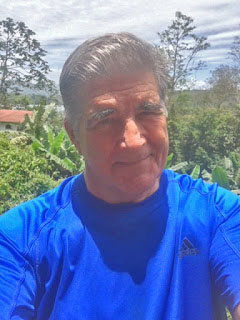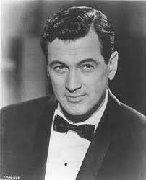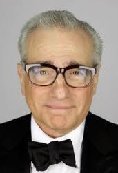A microphone, colloquially called a mic (/maɪk/), is a transducer that converts sound into an electrical signal. Microphones are used in many applications such as telephones, hearing aids, public address systems for concert halls and public events, motion picture production, live and recorded audio engineering, sound recording, two-way radios, megaphones, and radio and television broadcasting. They are also used in computers for recording voice, speech recognition, VoIP, and for other purposes such as ultrasonic sensors or knock sensors.
Several types of microphone are used today, which employ different methods to convert the air pressure variations of a sound wave to an electrical signal. The most common are the dynamic microphone, which uses a coil of wire suspended in a magnetic field; the condenser microphone, which uses the vibrating diaphragm as a capacitor plate; and the contact microphone, which uses a crystal of piezoelectric material. Microphones typically need to be connected to a preamplifier before the signal can be recorded or reproduced.
History
In order to speak to larger groups of people, a need arose to increase the volume of the human voice. The earliest devices used to achieve this were acoustic megaphones. Some of the first examples, from fifth-century-BC Greece, were theater masks with horn-shaped mouth openings that acoustically amplified the voice of actors in amphitheaters. In 1665, the English physicist Robert Hooke was the first to experiment with a medium other than air with the invention of the "lovers' telephone" made of stretched wire with a cup attached at each end.
In 1856, Italian inventor Antonio Meucci developed a dynamic microphone based on the generation of electric current by moving a coil of wire to various depths in a magnetic field. This method of modulation was also the most enduring method for the technology of the telephone as well. Speaking of his device, Meucci wrote in 1857, "It consists of a vibrating diaphragm and an electrified magnet with a spiral wire that wraps around it. The vibrating diaphragm alters the current of the magnet. These alterations of current, transmitted to the other end of the wire, create analogous vibrations of the receiving diaphragm and reproduce the word."
In 1861, German inventor Johann Philipp Reis built an early sound transmitter (the "Reis telephone") that used a metallic strip attached to a vibrating membrane that would produce intermittent current. Better results were achieved in 1876 with the "liquid transmitter" design in early telephones from Alexander Graham Bell and Elisha Gray – the diaphragm was attached to a conductive rod in an acid solution. These systems, however, gave a very poor sound quality.
The first microphone that enabled proper voice telephony was the (loose-contact) carbon microphone. This was independently developed by David Edward Hughes in England and Emile Berliner and Thomas Edison in the US. Although Edison was awarded the first patent (after a long legal dispute) in mid-1877, Hughes had demonstrated his working device in front of many witnesses some years earlier, and most historians credit him with its invention. The Berliner microphone found commercial success through the use by Alexander Graham Bell for his telephone and Berliner became employed by Bell. The carbon microphone was critical in the development of telephony, broadcasting and the recording industries. Thomas Edison refined the carbon microphone into his carbon-button transmitter of 1886. This microphone was employed at the first radio broadcast ever, a performance at the New York Metropolitan Opera House in 1910.
In 1916, E.C. Wente of Western Electric developed the next breakthrough with the first condenser microphone. In 1923, the first practical moving coil microphone was built. The Marconi-Sykes magnetophone, developed by Captain H. J. Round, became the standard for BBC studios in London. This was improved in 1930 by Alan Blumlein and Herbert Holman who released the HB1A and was the best standard of the day.
Also in 1923, the ribbon microphone was introduced, another electromagnetic type, believed to have been developed by Harry F. Olson, who applied the concept used in a ribbon speaker to making a microphone. Over the years these microphones were developed by several companies, most notably RCA that made large advancements in pattern control, to give the microphone directionality. With television and film technology booming there was a demand for high-fidelity microphones and greater directionality. Electro-Voice responded with their Academy Award-winning shotgun microphone in 1963.
If you want to read a lot more, go here: https://en.wikipedia.org/wiki/Microphone#History
- 1 cup (1/2 pint) heavy cream
- 3 eggs
- 2 (10-ounce) packages frozen chopped spinach, thawed and squeezed dry
- 1/3 cup grated Parmesan cheese
- 2 tablespoons all-purpose flour
- 1/8 teaspoon ground nutmeg
- 1/8 teaspoon ground red pepper
- 1/2 teaspoon salt
- 1/4 teaspoon black pepper
- Preheat oven to 350º. Coat an 8-inch square baking dish with cooking spray.
- In a medium bowl, beat heavy cream and eggs 2 to 3 minutes, or until foamy. Add remaining ingredients; mix well and pour into baking dish.
- Bake 30 to 35 minutes, or until a knife inserted in center comes out clean. Cut into squares and serve.
National Take a Hike Day on November 17th encourages us to get out there and hit the trails. With over 60,000 miles of trails in the National Trail System across the 50 states, there is no lack of opportunity to take a hike.
Some of those trails are hundreds of years old. For example, the oldest continuously used trail in the United States is Crawford Path in New Hampshire. The beginnings of the mountain path were cleared to the summit of Mt. Washington in 1819. Other trails allow us to follow in the footsteps of Lewis and Clark or explore even more ancient history like Effigy Mounds National Monument.
Besides experiencing majestic views and the great outdoors, we also exercise our bodies. Hiking not only gets our hearts pumping and our muscles moving, but being outdoors is good for our minds. Many of us spend too much time indoors behind a desk. Hiking can burn between 400-550 calories per hour. What better way to get a head start on all those ‘other’ holiday temptations and observe Take a Hike Day?
Events around the country celebrate Take a Hike Day. Local, state, and National Parks support hiking events encouraging us to enjoy a hike. Be sure to wear good shoes, take a snack and bring a buddy, but get out there and enjoy the fresh air, scenery and get a little exercise to boot!
HOW TO OBSERVE
Invite a friend and take a nice hike.

















